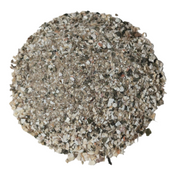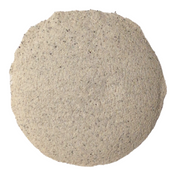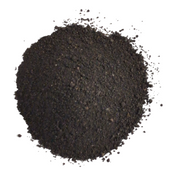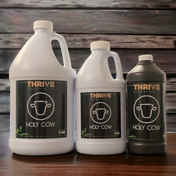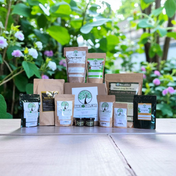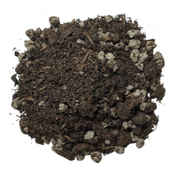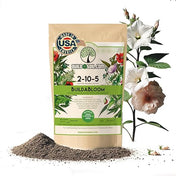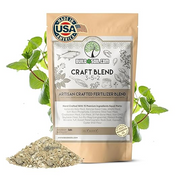The products created from the Neem Tree are so much more important than I had ever thought when I first started using them.
I first started using Neem oil because it was recommended to me by a friend as a natural method. Then when I went to the gardening store I was told that I might want to purchase some other type of bug spray because the employee had heard that Neem was systemic. I was new to gardening and asked the girl working there what she meant. She indicated to me that I would ultimately be eating the Neem oil because bug poisons would go into the plant and become part of it. I was worried, but also trusted my other friend so I went ahead and bought the bottle. I laugh now, but I was really concerned, standing there at the gardening store thinking about how Neem might get into my body somehow and hurt me. Fast forward 5 years and I am using Neem Toothpaste, Neem Mouthwash, Neem oil with coconut oil for cuts and rashes after hiking and a million other uses. It smells, but I've grown to love the stuff and have found much cleaner and more potent sources since I first started using neem from the gardening shop. Now, I also like to use Neem cake/meal in my home garden and in my house plants.
Uses for Neem cake in Gardening:
Mix into potting soil mix at 1/2 cup (4 oz) per Cubic foot (7.5 Gallons) This provides excellent slow release Nitrogen and bug defense in the soil.
You can also top dress about 1 tablespoon around the base of established plants. Best practice is to cover any top dress with Earth Worm Castings or mulch.
Water Extraction for watering or Spraying on plants:
Soak (with or without a bag) 1 cup in 1 gallon water for 24 hours and strain. Use soap or emulsifier at 1 ounce per gallon then spray! This can be used daily if raining or in bug season. Use weekly for pest prevention and maintenance.
The excerpts below are from "Neem: A Tree for Solving Global Problems"
In 1975 the U.S. Department of Agriculture research facility at Beltsville, Maryland, and 19 of its stations across the country embarked on a comprehensive program to study the pest- control properties of various plants. Several universities collaborated on this program; others worked independently. The research, which still continues at several locations, has demonstrated or verified the outstanding effects of neem extracts against numerous species of destructive insects and fungi. Of thousands of plant extracts tested, neem was by far the best.
In trials, crude alcohol extracts of neem seeds proved effective at very low concentrations against 60 species of insects, 45 of which are extremely damaging to American crops and stored products - causing billions of dollars of losses to the nation each year. They included sweet-potato whitefly (see page 94), serpentine leafminers (which attack vegetable and flower crops), gypsy moth (which causes millions of dollars of losses to homeowners and the forest industry), and several species of cockroach.
In 1985, the Environmental Protection Agency approved a commercial neem-based insecticide for certain nonfood uses. Called Margosan-O@, the product is available at present in limited quantities in 21 states, and the amount is growing quickly. It is registered for use against such pests as whiteflies on chrysanthemums, leafminers on birch trees, aphids on roses, chinch bugs on lawns, gypsy moths on shade trees, and thrips on gladiolus. So far, it is being used primarily in professional greenhouses.
As a result of all this work, neem is seen as the nation's leading candidate for providing a new generation of broadspectrum pesticides. However, neem cannot yet be legally used against pests that occur on food crops. Despite neem's apparent lack of toxicity or environmental danger, getting the authorization to use it on food plants will take time and great expense, because federal agencies require exhaustive testing before approving any pesticide for this purpose.
Although neem is essentially unknown to the American public, some neem-based consumer products are appearing in shops across the nation. Imported neem soap and toothpaste, for example, are sold fairly widely in specialty stores.
From Section 4: Whats in a Neem
Neem protects itself from the multitude of pests with a multitude of pesticidal ingredients. Its main chemical broadside is a mixture of 3 or 4 related compounds, and it backs these up with 20 or so others that are minor but nonetheless active in one way or another. In the main, these compounds belong to a general class of natural products called "triterpenes"; more specifically, "limonoids."
LIMONOIDS
So far, at least nine neem limonoids have demonstrated an ability to block insect growth, affecting a range of species that includes some of the most deadly pests of agriculture and human health. New limonoids are still being discovered in neem, but azadirachtin, salannin, meliantriol, and nimbin are the best known and, for now at least, seem to be the most significant.
Azadirachtin
One of the first active ingredients isolated from neem, azadirachtin has proved to be the tree's main agent for battling insects. It appears to cause some 90 percent of the effect on most pests. It does not kill insects - at least not immediately. Instead it both repels and disrupts their growth and reproduction. Research over the past 20 years has shown that it is one of the most potent growth regulators and feeding deterrents ever assayed. It will repel or reduce the feeding of many species of pest insects as well as some nematodes. In fact, it is so potent that a mere trace of its presence prevents some insects from even touching plants.
Azadirachtin is structurally similar to insect hormones called "ecdysones," which control the process of metamorphosis as the insects pass from larva to pupa to adult. It affects the corpus cardiacum, an organ similar to the human pituitary, which controls the secretion of hormones. Metamorphosis requires the careful synchrony of many hormones and other physiological changes to be successful, and azadirachtin seems to be an "ecdysone blocker." It blocks the insect's production and release of these vital hormones. Insects then will not molt. This of course breaks their life cycle.
On average, neem kernels contain between 2 and 4 mg of azadirachtin per gram of kernel. The highest figure so far reported - 9 mg per g - was measured in samples from Senegal.
========================================================
The Breakthrough
Although thousand-year-old Sanskrit medical writings mention neem's usefulness, the tree's exciting potential for controlling insects has only recently become clear.
Neem's ability to repel insects was first reported in the scientific literature in 1928 and 1929. Two Indian scientists, R.N. Chopra and M.A. Husain, used a O.001-percent aqueous suspension of ground neem kernels to repel desert locusts. Not until 1962, however, was the real significance demonstrated. That year, in field tests in New Delhi, S. Pradhan ground up neem kernels in water and sprayed the resulting suspension over different crops. He found that, although locusts landed on the plants, they refused to eat anything, sometimes for up to 3 weeks after the treatment. Furthermore, he noted that neem kernels were even more potent than the conventional insecticides then available and that neem's repellency was as important as its toxicity. In neighboring insecticide-treated fields, for instance, the insects also died, but not before consuming the crops.
Neem's insect-growth-regulating (IGR) effects were independently observed in England and Kenya in 1972. In England, L.N.E. Ruscoe, at that time an employee of the ICI Company, tested azadirachtin on insect pests such as cabbage white butterfly (Pieris brassicae) and cotton stainer bug (Dysdercus fasciatus) and noted IGR effects in each case. The azadirachtin was provided by D. Morgan, a Keele University chemist who had been the first to isolate azadirachtin. In Kenya that same year, K. Leuschner, a German graduate student working at the Coffee Research Station in Upper Kiambu, observed that a methanolic neemleaf extract controlled the coffee bug (Antestiopsis orbitalis bechuana) by growth-regulating effects. Most fifth-instar nymphs treated with the extract died during subsequent molts and the few that survived to adulthood had malformed wings and thoraxes.
Neem's fecundity-reducing effects were first recorded by R. Steets (another graduate student) and H. Schmutterer in Germany. Applying methanolic neem-kernel extract and azadirachtin to the Mexican bean beetle (Epilachna varivestis) and the Colorado potato beetle (Leptinotarsa decemlineata) they found that females almost stopped laying eggs. Some females had been completely sterilized, and the effect was irreversible.
========================================================
Meliantriol
Another feeding inhibitor, meliantriol, is able, in extremely low concentrations, to cause insects to cease eating. The demonstration of its ability to prevent locusts chewing on crops was the first scientific proof for neem's traditional use for insect control on India's crops.
Salannin
Yet a third triterpenoid isolated from neem is salannin. Studies indicate that this compound also powerfully inhibits feeding, but does not influence insect molts. The migratory locust, California red scale, striped cucumber beetle, houseflies, and the Japanese beetle have been strongly deterred in both laboratory and field tests.
Nimbin and Nimbidin
Two more neem components, nimbin and nimbidin, have been found to have antiviral activity. They affect potato virus X, vaccinia virus, and fowl pox virus. They could perhaps open a way to control these and other viral diseases of crops and livestock.
Nimbidin is the primary component of the bitter principles obtained when neem seeds are extracted with alcohol. It occurs in sizable quantities - about 2 percent of the kernel.
Others
Certain minor ingredients also work as antihormones. Research has shown that some of these minor neem chemicals even paralyze the "swallowing mechanism" and so prevent insects from eating. Examples of these newly found limonoids from neem include deacetylazadirachtinol. This ingredient, isolated from fresh fruits, appears to be as effective as azadirachtin in assays against the tobacco budworm, but it has not yet been widely tested in field practice.
From Section 7: Medicinals
Since antiquity neem has been renowned for healing. The earliest Sanskrit medical writings refer to the benefits of its fruits, seeds, oil, leaves, roots, and bark.(The tree's Sanskrit name was "arishtha," meaning "reliever of sickness.") Each of these has long been used in the Indian Ayurveda and Unani systems of medicine. Thus, over thousands of years, millions of Asians have used neem medicinally. In addition, in places where the tree has been introduced in recent times, such as tropical America and Africa, it has also established a reputation as a useful cure for various ailments.
Today, the best-established and most widely recognized uses are based on its merits as a general antiseptic. Neem preparations are reportedly efficacious against a variety of skin diseases, septic sores, and infected burns. The leaves. applied in the form of poultices or decoctions, are also recommended for boils, ulcers, and eczema. The oil is used for skin diseases such as scrofula, indolent ulcers, and ringworm.
Cures for many more ailments have been claimed but have not been independently confirmed by trials under controlled conditions. Nonetheless, there are intriguing indications that neem might in future be used much more widely. These promising, but unproved, applications include anti-inflammatory, hypotensive, and anti-ulcer treatments.
A summary of some recent results in medical and veterinary studies follows.
FUNGICIDES
Neem has proved effective against certain fungi that infect the human body. Such fungi are an increasing problem and have been difficult to control by synthetic fungicides. For example, in one laboratory study, neem preparations showed toxicity to cultures of 14 common fungi, including members of the following genera:
· Trichophyton - an "athlete's foot" fungus that infects hair, skin, and nails;
· Epidermophyton - a "ringworm" that invades both skin and nails of the feet;
· Microsporum - a ringworm that invades hair, skin, and (rarely) nails;
· Trichosporon - a fungus of the intestinal tract;
· Geotrichum - a yeastlilce fungus that causes infections of the bronchi, lungs, and mucous membranes; and
· Candida - a yeastlike fungus that is part of the normal mucous flora but can get out of control, leading to lesions in mouth (thrush), vagina, skin, hands, and lungs.
ANTIBACTERIALS
In trials neem oil has suppressed several species of pathogenic bacteria, including:
· Staphylococcus aureus. A common source of food poisoning and many pus-forming disorders (for example, boils and abscesses), this bacterium also causes secondary infections in peritonitis, cystitis, and meningitis. Many strains are now resistant to penicillin and other antibiotics, one reason for the widespread occurrence of staphylococcal infections in hospitals.
· Salmonella typhosa.(Patel and Trivedi, 1962.) This much-feared bacterium, which lives in food and water, causes typhoid, food poisoning, and a variety of infections that include blood poisoning and intestinal inflammation. Current antibiotics are of only uncertain help in treating it.
However, neem has many limitations as an antibiotic. In the latter test, neem showed no antibacterial activity against certain strains of the above bacteria, and none against Citrobacter, Escherichia coli, Enterobacter, Klebsiella pneumoniae, Proteus mirabilis, Proteus morgasi, Pseudomonas aeruginosa, Pseudomonas E01, and Streptococcus faecalis.
ANTIVIRAL AGENTS
In India, there is much interesting, but anecdotal, information attributing antiviral activity to neem. Its efficacy - particularly against pox viruses - is strongly believed, even among those of advanced medical training. Smallpox, chicken pox, and warts have traditionally been treated with a paste of neem leaves - usually rubbed directly onto the infected skin.
Experiments with smallpox, chicken pox, and fowl pox suggest that there may be a true biological basis for this practice. Crude neem extracts absorbed the viruses, effectively preventing them from entering uninfected cells.(Rao et al., 1969; Rae and Sethi, 1972.) Unfortunately, no antiviral effects were seen once the infection was established within the cell. Thus neem was effective prevention, but not cure.
Recent pharmacological studies have supported the belief that neem leaves possess some antiviral activity. So far these are only preliminary and unconfirmed results, but they are intriguing, nonetheless. In the United States, aqueous neem-leaf extracts have shown low to moderate inhibition of the viral DNA polymerase of hepatitis B virus.(Information from D.W. Unander) In Germany, an ethanolic neem-kernel extract has proved effective against herpes virus. And in horticultural studies, crude extracts also seemed to effectively bind certain plant viruses, and so limit infection (see Chapter 6).
Should these early results prove to be soundly based, an array of extremely virulent and difficult diseases of people - not to mention of wildlife and livestock - might be treated.
DERMATOLOGICAL INSECTS
Given all of neem's insecticidal properties, it is perhaps not unexpected that it is a common folk remedy against maggots and head lice. In Haiti, for instance, crushed leaves are rubbed into open wounds that have become maggot infested. And in India and Bangladesh, villagers apply neem oil to the hair to kill head lice, reportedly with great success.
DENTAL TREATMENTS
As noted earlier, both in India and Africa millions of people use twigs as "toothbrushes" every day. For many the twig is neem. Dentists have endorsed this ancient practice, finding it effective in preventing periodontal disease. It is unclear whether the benefit is due to regular gum massage, to preventing plaque buildup, to neem's inherent antiseptic action, or to all three.
As also noted earlier, a German company uses neem (actually, extracts of bark) as the active ingredient in toothpastes and other oral hygiene preparations. It claims that its tests prove need bark to be highly effective at both preventing and healing gum inflammations and periodontal disease.
CHAGAS' DISEASE
Extracts of neem reportedly affect the kissing bugs that transmit the much-feared Chagas' disease (see sidebar, page 64). They do not kill the insect; instead they "immunize" it against parasites that live inside it for part of their life cycle. The discovery may point the way to controlling this major health problem in Latin America, although delivering neem materials to these tiny bloodsuckers in rural hovels is perhaps impossible in practice.
There is so much more information, but I wanted to touch on a few key points so you can understand why we are so excited to carry high quality OMRI certified organic Neem Products imported from India.
Read more over here --> "Neem: A Tree for Solving Global Problems"

